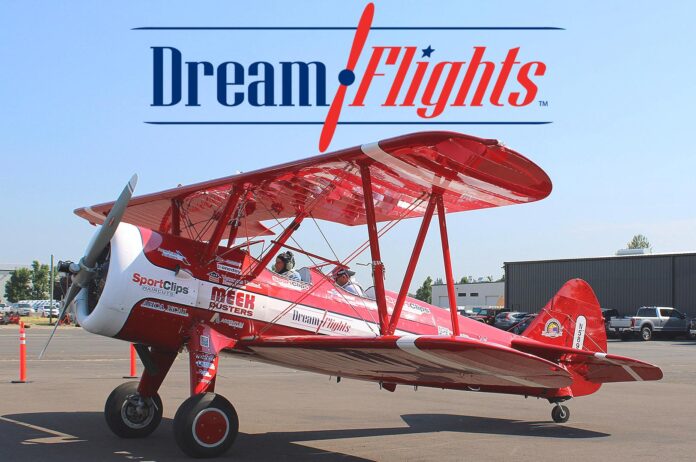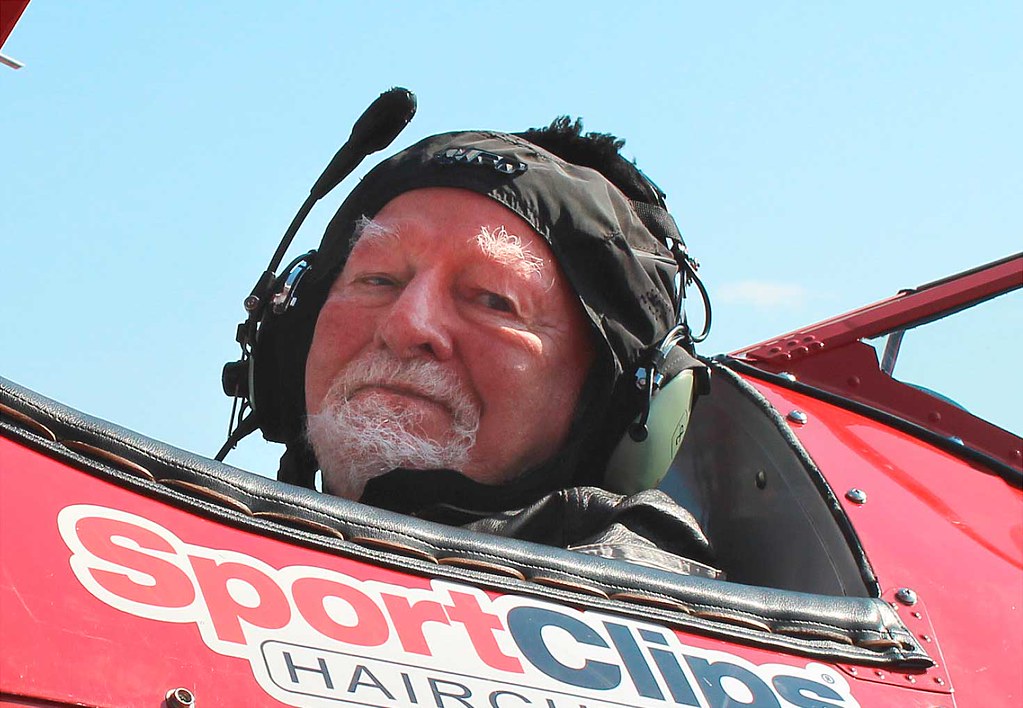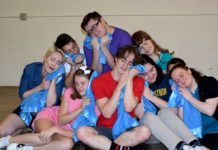
On July 28 four local veterans took off into the wild blue yonder at Aurora State Airport courtesy of the Dream Flights Foundation.
For one of them, the flight aboard a 1944 Boeing Stearman biplane was a long time coming. Don Whetsell served in the U.S. Air Force from 1951 to 1955, and when he first learned about Dream Flights, the non-profit organization was only flying World War II veterans so Whetsell was ineligible to participate. But he provided information about the program to the management at King City Senior Village, where he lives, and joined a group that cheered on a WWII veteran who did the same flight out of Aurora last year.
This year four slots were available for Senior Village residents, and with Dream Flights opening up the flights to all veterans, three Korean War-era veterans participated along with a Vietnam War-era veteran.
Whetsell was the first of the four to fly with volunteer pilot Ryan Weir, whose day job is flying for Southwest Airlines. As each veteran got settled in the aircraft with their seat-belt on and helmet secured, Weir, who flew the plane seated behind them and has done about 50 Dream Flights, told them to signal with a thumb’s up if they were doing okay or a thumb’s down if they wanted to go back.
Weir, whose dad was a pilot in the Vietnam War, added, “I’ve had zero thumbs down.”
After Whetsell landed, he said, “It was fantastic. I want to go around again! I loved the open cockpit. I am grateful for the opportunity.”
And as Whetsell always says when given the opportunity, “Please remember the MIAs who are still out there. I ask everyone to pray for the MIAs. They are being forgotten more and more.”
During the Korean War, Whetsell was a radar operator on an island in the Korean Straights in the Air Defense Identification Zone, guiding B-29s off Okinawa, Japan, as they headed back and forth to the Manchurian border. “We guided them up and back through our zone,” Whetsell said. “They dropped bombs almost every night.
“I have loved aircraft ever since I was little. When I was 4 or 5, my dad paid $3 for me to ride with a barnstormer. That was a lot of money in those days. When I was young, I had a private pilot’s license and kept a plane here at the airport.”
Next up was Jerry Gleason, who served in the U.S. Navy from 1950 to 1970, spending 10 years working on mines and 10 years as an electrician on amphibious warfare ships operating as launch-and-recovery platforms for helicopters and other take-off-and-landing aircraft. On different ships, Gleason made stops in French Morocco, Malta, Hawaii, the Philippines and Japan.
When Gleason landed after his flight, he said, “It was very nice. I felt comfortable. The landing was good.”
The third to fly was John Edgell, who served in the U.S. Army from 1952 to 1955, working in radio repair service during the Korean War, and then spending 14 years in the Oregon National Guard. But the highlight of being in the service occurred when he was stationed at Fort Monmouth in New Jersey.
“I picked up my (future) wife on the boardwalk,” he said. “My friend was 6-feet, 6-inches tall, and when we met two girls, he would go for the tall one, and I would go for the other one. After we met these two girls and talked to them a little, they went to the bathroom. He and I decided we each liked the other girl better, and it turned out they had the same conversation in the bathroom. When they came out, we switched, and I got the taller one, and we ended up getting married.”
After Edgell landed, he said, “It was great, a great trip. I would do it again in a heartbeat.”
Finally, the last to lift off was Sandie Robertson, who served in the U.S. Marines from 1962 until almost 1967 and later in the Air Force Reserves for 20 years.
“I went to the Post Office to talk to the Air Force recruiter, and he wasn’t there, but the Marine recruiter was,” Robertson said. “Two weeks later I was in boot camp, where there were 27 women out of four 30-person squads. I served at Camp Pendleton and Camp Smith in Hawaii before being sent to Kansas City to be discharged.
“I was out of the military for 19 years and then went into the Air Force Reserves. I taught mid-level supervision classes all over the United States.”
All the veterans were wearing long, white, fringed scarves for the occasion, and as Robertson settled into her seat, she threw her scarf back over the shoulder “like Snoopy.”
After she landed, Robertson said, “It was great. I am happy to be home safe and sound. It was everything I thought it would be and more. I watched people play golf. It was a wonderful experience.”
Then she added, “I get to go again. I’m not getting out.”
After each flight, Weir handed each veteran a signed baseball cap and poster commemorating their flight.
Although the tarmac was hot during the three-hour event, Senior Village provided lunch and lots of cold water for everyone while playing patriotic music over a loudspeaker. And four firefighters from the Aurora Fire District, who had been invited to attend by Senior Village management, stood by the entire time out of respect for the veterans.
The Dream Flight Foundation was created in 2011 by Darryl and Carol Fisher and the Fisher family. Through donors, community support and volunteers, the foundation provides Dream Flights in Boeing Stearman biplanes, which were used for crop-dusting and to train military pilots in the late 1930s and early 1940s.

For more information, visit dreamflights.org.





















